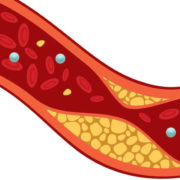Welcome to ‘ABA Programs Demystified: A Guide to Understanding Therapy Options’. In this comprehensive article, we will unravel the intricacies of ABA programs, giving you the knowledge and insight needed to navigate through therapy options. Whether you are a parent, caregiver, or professional in the field, this guide is designed to empower you with the information you need to make informed decisions about ABA therapy.
ABA programs, or Applied Behavior Analysis programs, are evidence-based interventions that have been widely recognized for their effectiveness in addressing a range of behavioral challenges. From developmental disorders such as autism spectrum disorder to behavioral issues and learning difficulties, ABA therapy offers targeted and individualized treatment plans to help individuals reach their fullest potential.
Throughout this guide, we will cover key topics such as the principles of ABA, the different types of ABA programs available, and how to find the right therapist or provider for your needs. Our aim is to demystify ABA programs and provide you with the tools and knowledge required to navigate the world of therapy options confidently.
Join us as we dive into the world of ABA programs and unlock the potential for growth and development in individuals with behavioral challenges.
What is ABA Therapy?
ABA therapy, short for Applied Behavior Analysis therapy, is an evidence-based approach that focuses on understanding and modifying behavior. It is a systematic and data-driven approach that aims to improve socially significant behaviors by applying principles of learning and behavior. ABA therapy is rooted in the belief that behavior can be learned and unlearned through the application of reinforcement and other behavior change techniques.
The History and Development of ABA Therapy
ABA therapy has a rich history that dates back to the 1960s. It was initially developed by psychologist B.F. Skinner, who laid the foundation for the principles of behavior analysis. Over the years, ABA therapy has evolved and been refined, incorporating insights from various disciplines such as psychology, education, and neuroscience. Today, it is considered the gold standard in autism treatment and is widely used for individuals with other developmental and behavioral challenges as well.
The Principles and Techniques Used in ABA Therapy
ABA therapy is based on a set of principles derived from the science of behavior analysis. These principles include positive reinforcement, prompting, shaping, and fading. Positive reinforcement involves providing rewards or incentives to increase desired behaviors, while prompting involves providing cues or assistance to help individuals perform desired behaviors. Shaping and fading techniques are used to gradually shape behavior by breaking it down into smaller, manageable steps and then fading out prompts over time.
Different Types of ABA Programs
ABA programs can be delivered in various settings, including clinics, schools, homes, and community settings. The most common types of ABA programs include discrete trial training (DTT), naturalistic teaching strategies, pivotal response training (PRT), and verbal behavior intervention. Each program has its own unique focus and techniques, but they all share the common goal of promoting positive behavior change and skill development.
Choosing the Right ABA Program for Your Child
When selecting an ABA program for your child, it is essential to consider their specific needs and goals. Look for programs that have a strong emphasis on individualized treatment plans, ongoing assessment and data collection, and parent involvement. It is also important to ensure that the program is delivered by qualified and experienced therapists who are trained in ABA principles and techniques.
The Benefits of ABA Therapy for Individuals with Autism
ABA therapy has been shown to have numerous benefits for individuals with autism. It can help improve communication and language skills, social interactions, academic performance, and adaptive behaviors. ABA therapy also focuses on reducing challenging behaviors such as tantrums, aggression, and self-injury. The individualized nature of ABA therapy allows for targeted interventions that address the unique needs of each individual.
Success Stories and Testimonials from Families Who Have Used ABA Therapy
Countless families have experienced remarkable success and positive outcomes through ABA therapy. From significant improvements in social skills and communication to increased independence and quality of life, ABA therapy has transformed the lives of many individuals with autism and their families. Personal stories and testimonials serve as powerful reminders of the potential for growth and development that ABA therapy offers.
Insurance Coverage and Funding Options for ABA Programs
Insurance coverage for ABA therapy varies depending on the provider and the specific insurance policy. Many insurance companies now recognize ABA therapy as a medically necessary treatment for individuals with autism and provide coverage for it. Additionally, there are often funding options available through government programs, grants, and scholarships to help offset the costs of ABA programs. It is important to explore all available resources and advocate for insurance coverage to ensure access to ABA therapy.
Finding ABA Therapy Providers in Your Area
When searching for ABA therapy providers, it is crucial to consider factors such as location, reputation, and the qualifications of the therapists. Start by reaching out to local autism organizations, pediatricians, and schools for recommendations. Online directories and forums can also be valuable resources for finding qualified ABA therapy providers in your area. It is essential to conduct thorough research, ask questions, and visit potential providers to ensure they align with your child’s needs and goals.
Conclusion: The Importance of ABA Therapy in Supporting Individuals with Autism
ABA therapy has revolutionized the way we understand and address behavioral challenges in individuals with autism and other developmental disorders. Its evidence-based approach, individualized treatment plans, and focus on positive behavior change make it a powerful tool for supporting growth and development. By demystifying ABA programs and providing comprehensive information, we hope to empower individuals, families, and professionals to make informed decisions and access the benefits of ABA therapy.
In conclusion, ABA programs offer a structured and effective approach to address behavioral challenges and promote skill development in individuals with autism and other developmental disorders. Through the principles of ABA, various techniques, and individualized treatment plans, individuals can reach their fullest potential and lead fulfilling lives. By understanding the different types of ABA programs available, choosing the right program, and accessing appropriate funding and providers, individuals and families can embark on a journey of growth, development, and success.













Comments